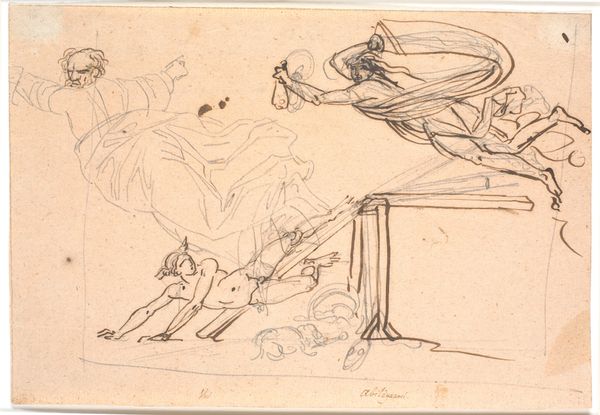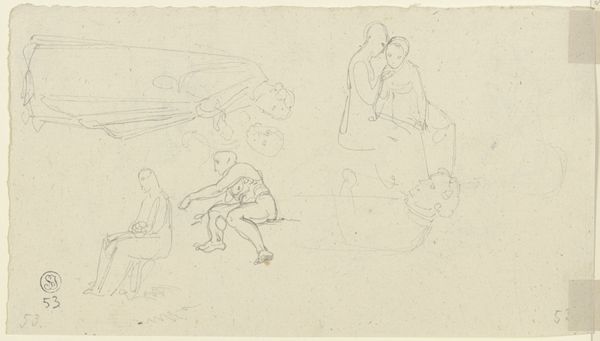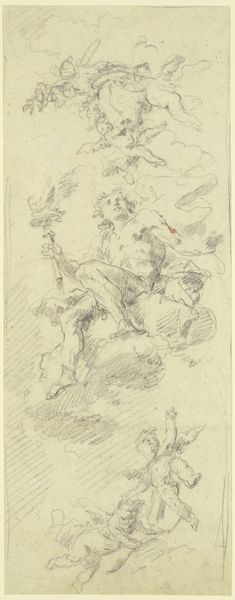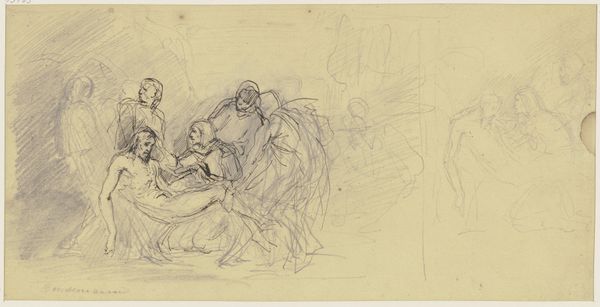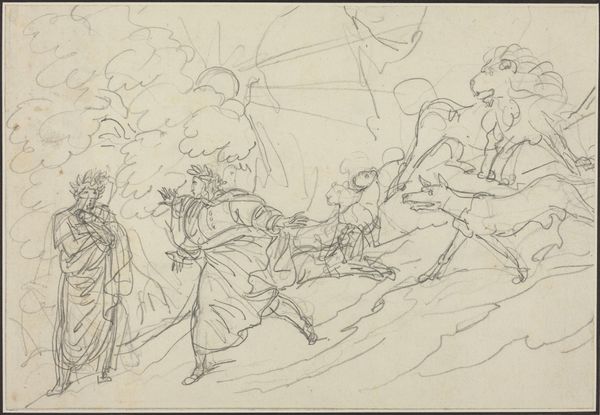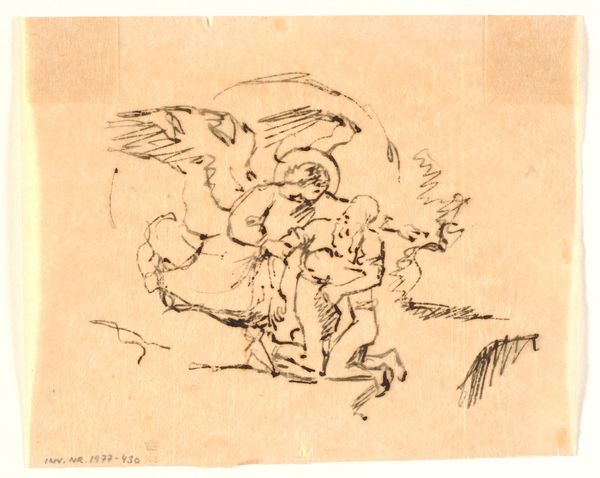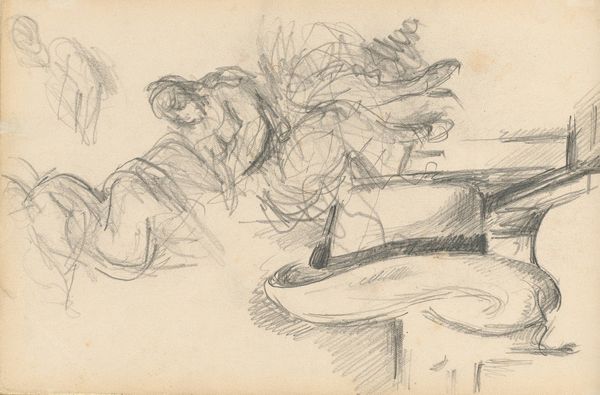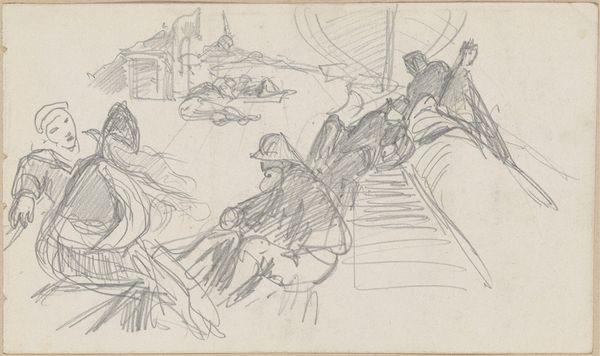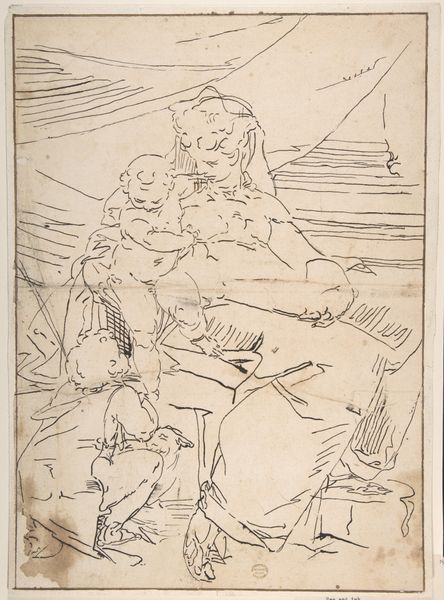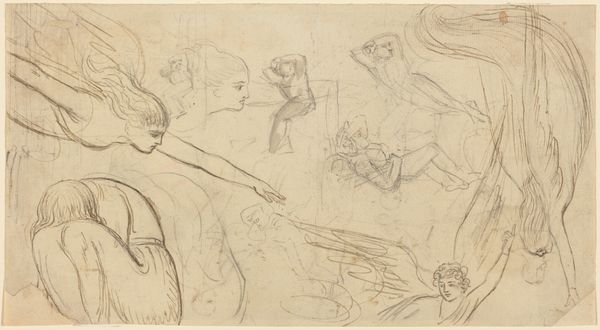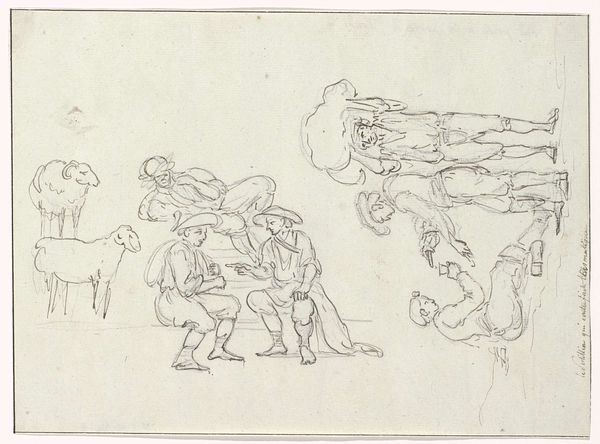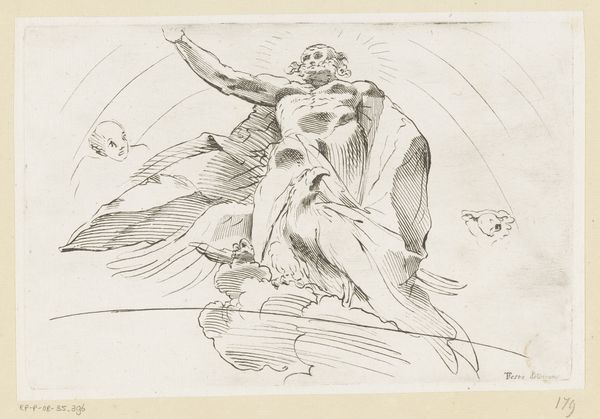
Büste eines bärtigen Mannes (Sueton) auf einem zerbrochenen Sockel 1748
0:00
0:00
drawing, paper, ink, indian-ink, graphite
#
drawing
#
baroque
#
pen sketch
#
paper
#
ink
#
indian-ink
#
15_18th-century
#
graphite
#
rococo
Copyright: Public Domain
Curator: This is Paul Egell's "Büste eines bärtigen Mannes (Sueton) auf einem zerbrochenen Sockel," a pen, graphite, and ink drawing from 1748. It currently resides in the Städel Museum. Editor: What a jumble! The overall impression is one of chaotic elegance. There are all these overlapping lines, almost like a discarded sketch, but with very deliberate shading. Curator: It's intriguing, isn't it? Note the placement of Sueton's bust—or rather, a depiction of Sueton's bust—atop the fragmented pedestal. What stories does this choice tell about memory, authority, and the fragility of historical representation? Editor: The fragmented base is really interesting. Is that supposed to symbolize a literal breaking or decay, maybe of societal structures? What could that angelic figure at the upper left signify? I find its inclusion puzzling in terms of composition. Curator: That figure likely represents inspiration or perhaps Fame, illuminating Sueton's work as a writer—he's recording history for posterity. It adds another layer of complexity—the interplay between the tangible, the historical, and the allegorical. Note too how the inclusion of classical motifs such as a vase subverts a singular point of meaning. Editor: Semiotically, I notice this almost theatrical juxtaposition, and find it unsettling. It makes you think. What were the cultural values projected and imposed on these classical figures? Curator: Precisely! Egell challenges us to reconsider how we interact with historical figures and their legacies. The Rococo era often reinterpreted Classical figures within new aesthetic and intellectual frameworks. This piece really underscores how meanings evolve and are always under reconstruction. Editor: I agree. The fragmented base emphasizes how historical foundations themselves are not fixed. It reveals not only reverence for the past but also acknowledgment of its inevitable mutability. Curator: This drawing is a beautiful reminder that history isn't a static monument but a process of continual reinterpretation, a living dialogue. Editor: Absolutely, a provocative fragment prompting us to examine what remains, what is lost, and what we choose to reconstruct.
Comments
No comments
Be the first to comment and join the conversation on the ultimate creative platform.
